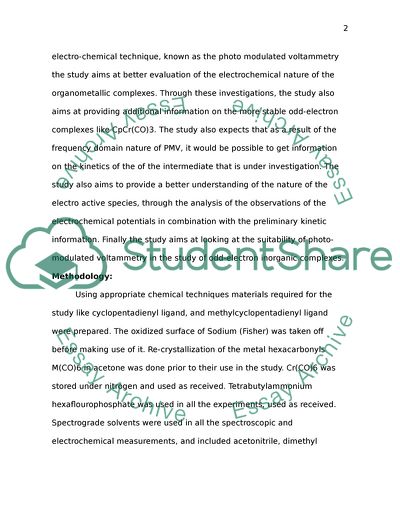Cite this document
(The Nature of the Electron Transfer Agent in the Dimmer Photolysis Research Paper Example | Topics and Well Written Essays - 1250 words, n.d.)
The Nature of the Electron Transfer Agent in the Dimmer Photolysis Research Paper Example | Topics and Well Written Essays - 1250 words. https://studentshare.org/chemistry/1704288-summary-of-review-article
The Nature of the Electron Transfer Agent in the Dimmer Photolysis Research Paper Example | Topics and Well Written Essays - 1250 words. https://studentshare.org/chemistry/1704288-summary-of-review-article
(The Nature of the Electron Transfer Agent in the Dimmer Photolysis Research Paper Example | Topics and Well Written Essays - 1250 Words)
The Nature of the Electron Transfer Agent in the Dimmer Photolysis Research Paper Example | Topics and Well Written Essays - 1250 Words. https://studentshare.org/chemistry/1704288-summary-of-review-article.
The Nature of the Electron Transfer Agent in the Dimmer Photolysis Research Paper Example | Topics and Well Written Essays - 1250 Words. https://studentshare.org/chemistry/1704288-summary-of-review-article.
“The Nature of the Electron Transfer Agent in the Dimmer Photolysis Research Paper Example | Topics and Well Written Essays - 1250 Words”. https://studentshare.org/chemistry/1704288-summary-of-review-article.


